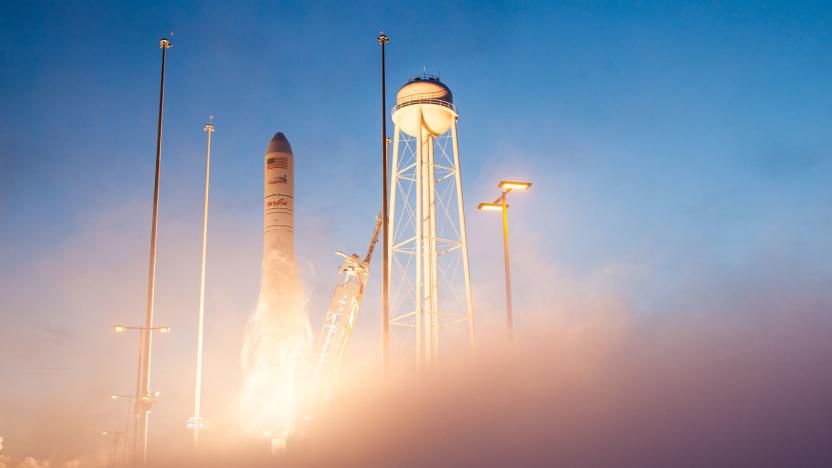atlasv
Latest

Senate alters sanctions to allow use of Russian rocket engines
Don't look now, but American spaceflight just dodged a bullet. Senators have passed an amendment to an Iran-Russia sanctions bill that, if gone unchecked, would have barred both NASA and private outfits from using Russian rocket engines. The original measure was supposed to prevent purchases from organizations that work with Russian defense and intelligence, but it would have effectively banned imports of the common RD-180 engine (found in ULA's Atlas 5) and RD-181 (used in Orbital ATK's Antares).

Boeing CST-100 capsule could shuttle astronauts to ISS, shows off its innards in Colorado Springs
With the Space Shuttle now officially grounded, NASA has been researching alternatives for ferrying astronauts from Earth to the International Space Station, orbiting some 230 miles above the planet. One such vehicle has made its way from Boeing's HQ to the National Space Symposium in Colorado Springs, where a full-size model is on display for conference attendees. Externally, the spacecraft appears very similar to the reentry modules of yesteryear, measuring 14.5 feet with room for up to seven people. The craft is designed to make its way through the atmosphere mounted to an Atlas V rocket, and is rated for up to 10 roundtrip missions. As is typical with spacecraft, it looks like astronauts won't be traveling with first-class accommodations -- things will likely feel quite cozy when the CST-100 is at capacity -- but such conditions come with the territory. There's no date set for delivery, but the craft could be making its way to space as early as 2015, and has reportedly been tested in the Nevada desert as recently as this month.

Boeing's CST-100 to shoot non-NASA astronauts into space by 2015
Day job just too darn terrestrial? Maybe you should score a gig at Boeing, which'll apparently sling two of its very own into space come 2015. What'll be their chariot? The company's CST-100 -- you know that spiffy capsule that can hurtle a lucky seven humans 100km into the dark abyss. Strapped to ULA's Atlas V, the crew will follow two unmanned missions, eventually reaching the International Space Station. If that all goes to plan, commercial service will start in 2016. Now about those extra five seats...

Boeing's new unmanned X-37B launches into orbit, won't come home until it finds Major Tom
Model X-37B might look familiar to you -- it was the name of an autonomous space vehicle that took flight just about a year ago, orbited for a whopping eight months, and then successfully returned to our planet all by itself. Now a new version of the X-37B has blasted off to hang outside of the atmosphere for a while. The spacecraft left Cape Canaveral Launch Complex 41 down in Florida and hurtled to a low-Earth orbit with help of a Atlas V rocket. Boeing isn't saying exactly what it's doing up there, but we suspect this spaceship knows which way to go.

Summer-loving NASA engineers launch SDO probe to worship the sun (video)
Say all you want about how bad your local forecast is, it's way more accurate than our local solar forecast. The last time we checked, solar storms are said to knock out GPS temporarily sometime in the next two years -- the kind of window that would make even the most suave meteorologist smirk. With the launch of the new Solar Dynamics Observatory we're hoping NASA can shrink that window down by, oh, at least a few months. The probe lifted off yesterday, perched atop an Atlas V rocket, and is now orbiting Earth. There it will study our sun with a series of optical and magnetic sensors, beaming data back at a rate of 150MBit/sec, making us ever so slightly jealous that this thing can get a better signal in space than we can down here on the surface. The launch fireworks are embedded below for those who weren't glued to NASA TV yesterday morning. [Thanks, Pavel]



